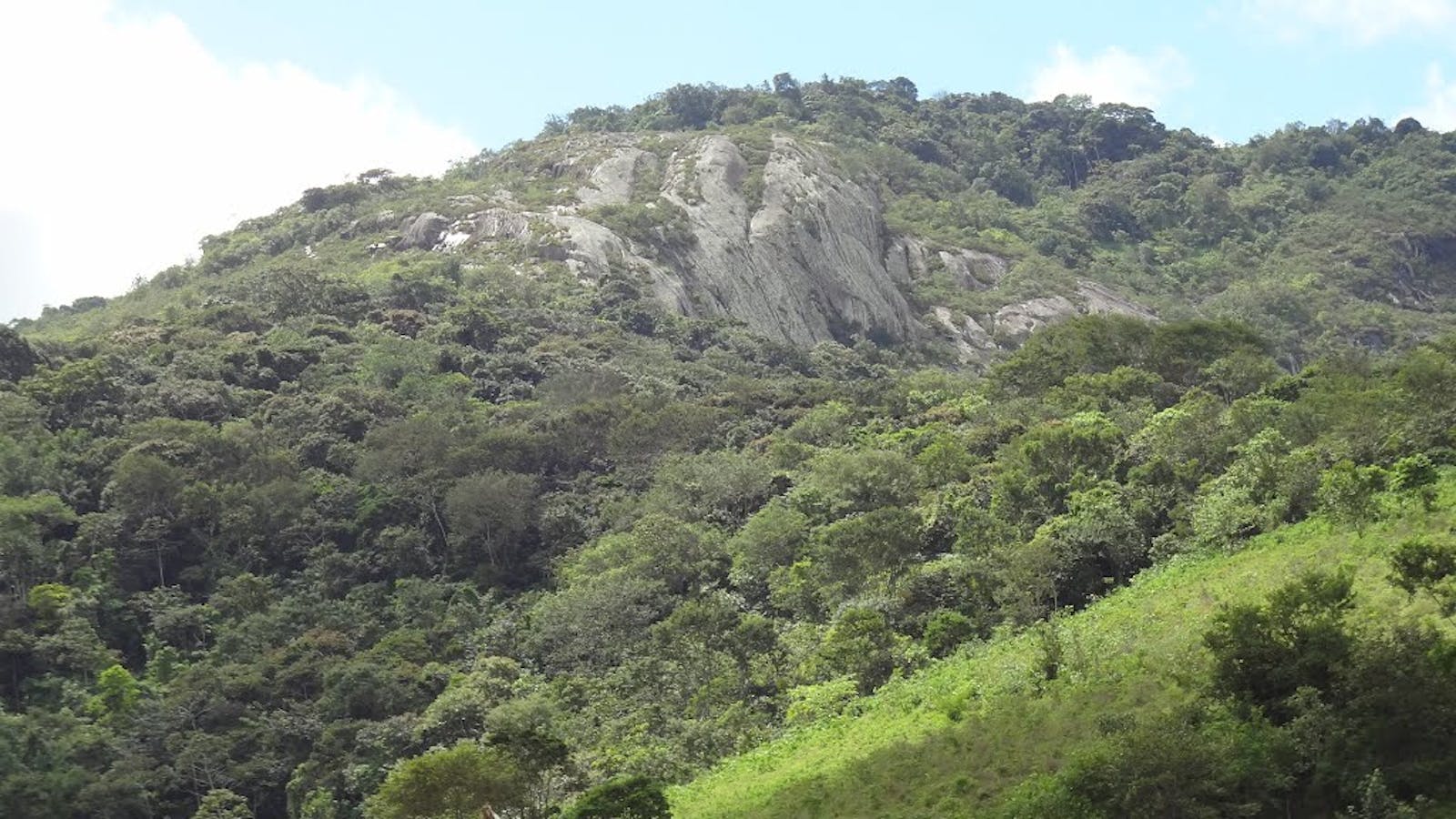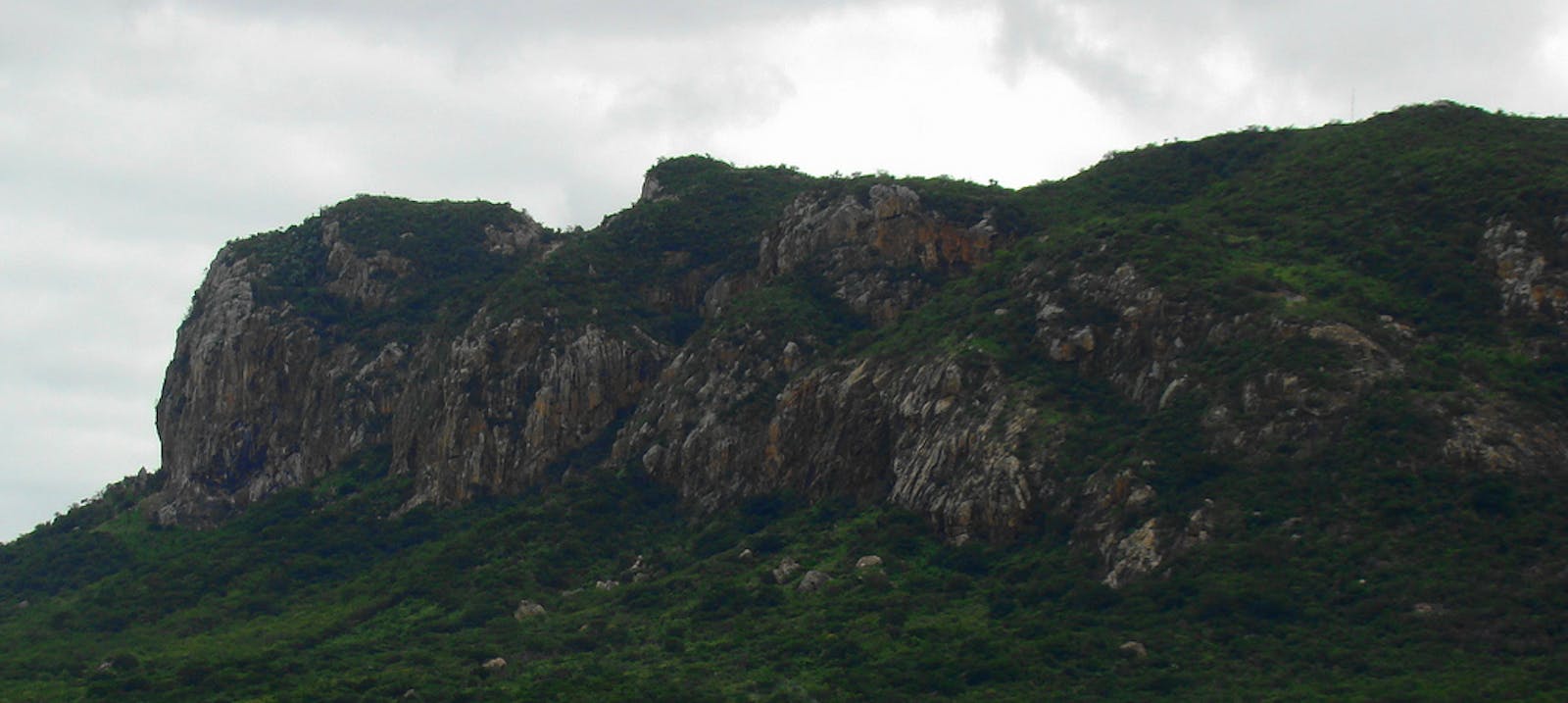Pernambuco Interior Forests
The ecoregion’s land area is provided in units of 1,000 hectares. The conservation target is the Global Safety Net (GSN1) area for the given ecoregion. The protection level indicates the percentage of the GSN goal that is currently protected on a scale of 0-10. N/A means data is not available at this time.
Bioregion: Brazilian Atlantic Moist Forests (NT14)
Realm: Southern America
Ecoregion Size (1000 ha):
2,274
Ecoregion ID:
492
Conservation Target:
18%
Protection Level:
1
States: Brazil
The Pernambuco Interior Forest ecoregion is located in north-eastern Brazil. These lush rainforests support rich and diverse species, including the seven-coloured tanager. Hue-packed in turquoise, green, aqua, blue, yellow, gold, and orange as if from the cartoon, these colorful little birds forage high in the upper stories of the canopy for seeds and small insects. They often fly together in small groups and in mixed species feeding flocks through the tree branches eating fruits, berries and seeds and occasionally gleaning small insects.
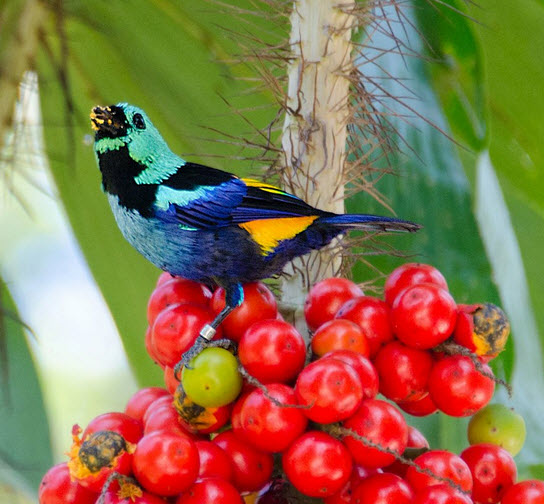
The flagship species of the Pernambuco Interior Forests ecoregion is the seven-colored tanager. Image credits: Creative Commons
Pernambuco Interior Forest is located in a narrow strip, approximately 50 km wide, between the ecoregions of Pernambuco Coastal Forests and Caatinga, in northeastern Brazil. In the north it borders the Curimataú River while in the south it is limited by the large São Francisco River. The climate is tropical with an annual rainfall between 1,250–1,750 mm and a dry period from October through March. Forests spread from low-elevation plateaus to the windward slopes of Borborema at 600 to 800 m.
The main type of vegetation is the Atlantic semi-deciduous forest, a four-stratum vegetation with emergent trees taller than 35 m. Emergent and canopy layers include characteristic tree species belonging to the following families: cashew, legume, borage (or “forget me not”), and bignonias. Understory vegetation strata are rich in Myrtle and coffee species. Transitional plant communities mixing species of Atlantic forests and Caatinga dry forests sets this ecoregion apart from any other in the Atlantic forest complex.
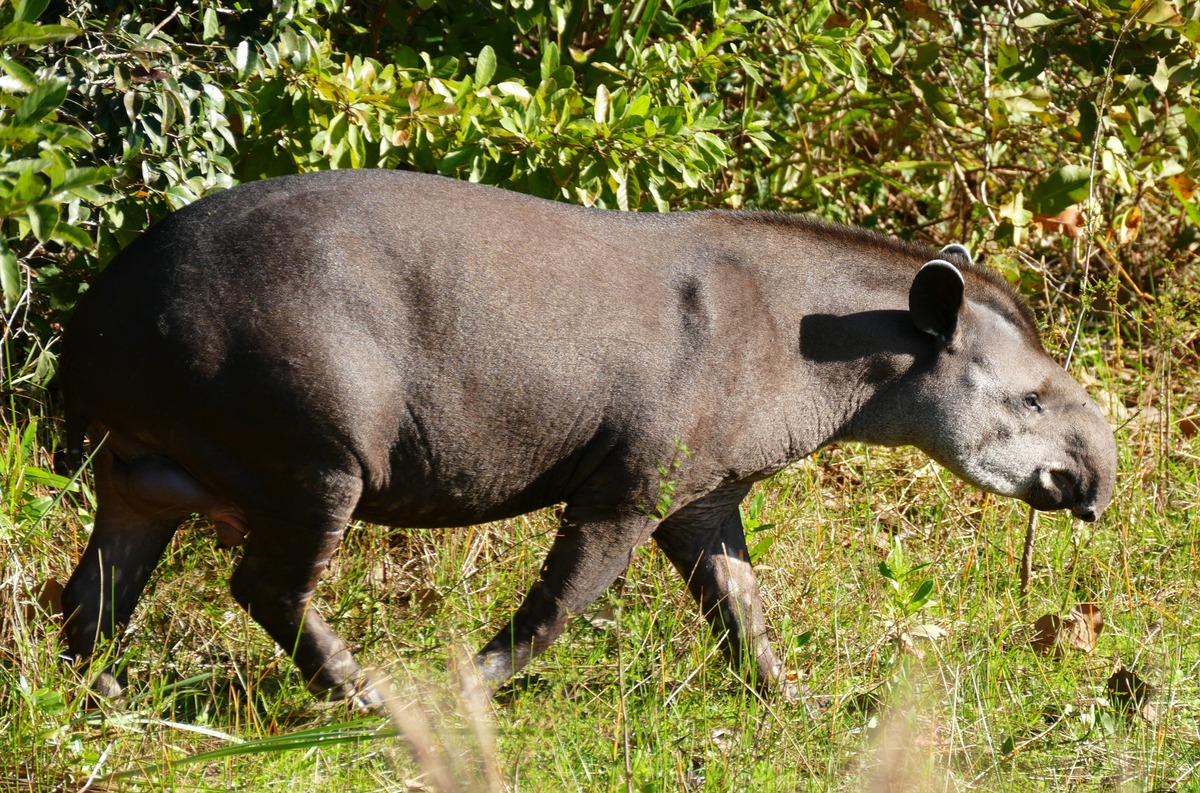
Lowland tapir. Image credit: Bernard Dupont, Creative Commons
Based on the ranges of endemic species of several groups of organisms, Pernambuco Interior Forests and Pernambuco Coastal Forests make up a single center of endemism, named the “Pernambuco Center.” In general, there is far less information about these interior forests, from a scientific viewpoint, than about the adjacent coastal forests, although recent studies have identified several new species of flowering plants in these interior forests. These interior forests harbor populations of several threatened species of plants. The largest populations of Brazilwood, or “Pau-Brasil,” are found mostly in the interior forests.
Several extraordinary restricted-range avifaunas are found in the interior forests, although most of them are shared with the coastal forests. Together with the coastal forests this area has been recognized as an Endemic Bird Area. Examples of near-endemic birds to this ecoregion include buff-breasted tody-tyrant, white-winged cotinga, seven-colored tanager, and yellow-faced siskin. Mammal species include jaguar, puma, ocelot, and lowland tapir.
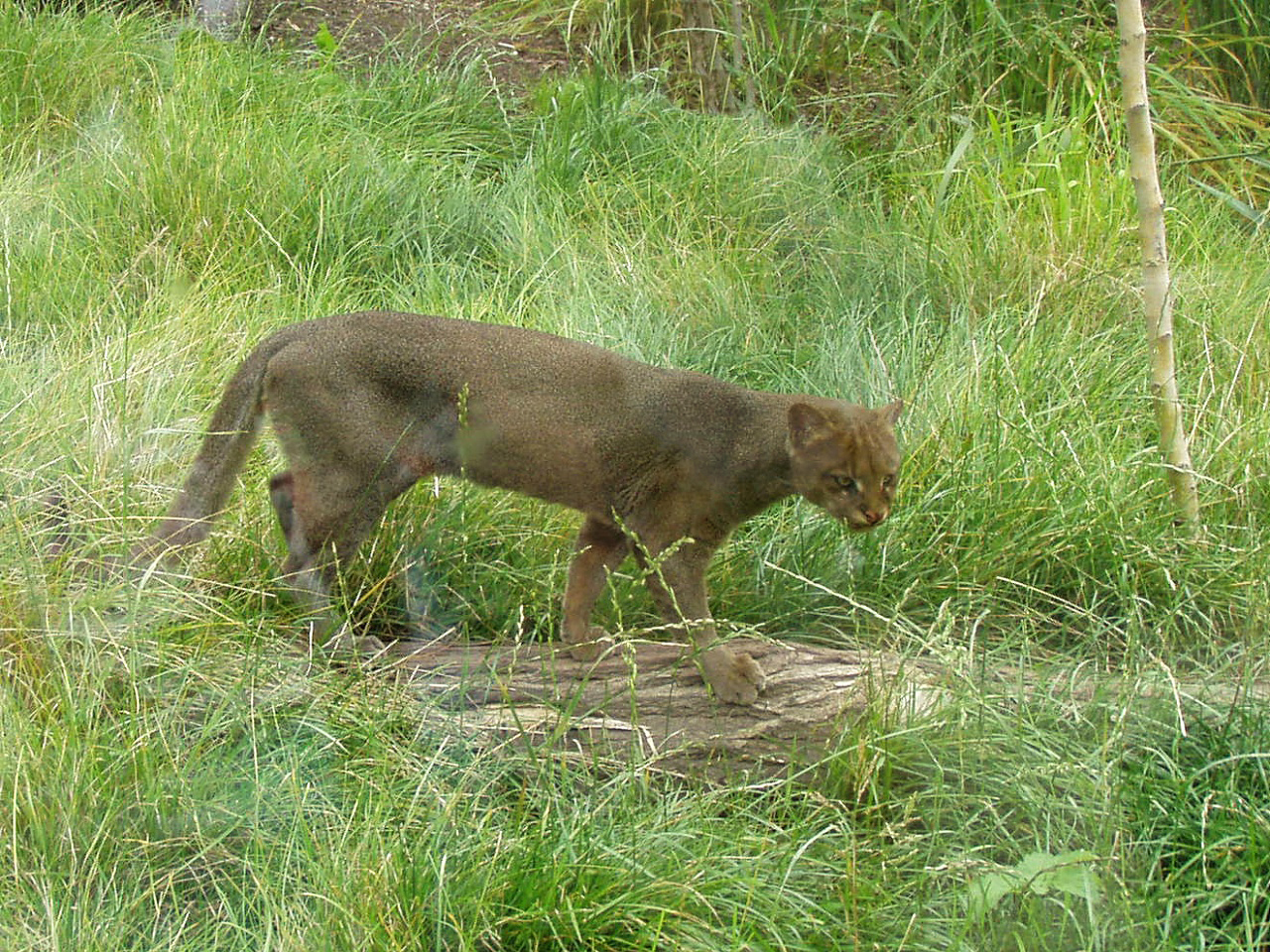
Puma. Image credit: Creative Commons
Deforestation for fuel, timber, agriculture, and cattle ranching has removed 95% of the original vegetation. Today, most of the forest is represented by small, 0.01–0.1 km2, isolated, floristically impoverished fragments, and it is difficult to discern without careful botanic studies which are primary and which are secondary forests. Forest remnants comprise approximately 900 km2 of semi-deciduous forests and 420 km2 of ecotonal vegetation, Atlantic forest transition to Caatinga dry forest.
There are only three protected areas, and the most important reserve is Pedra Talhada Biological Reserve in Quebrangulo, Alagoas. It has been indicated as one of the more important areas for protection of threatened birds in South America. Illegal hunting are a threat to many large mammal and terrestrial bird species.
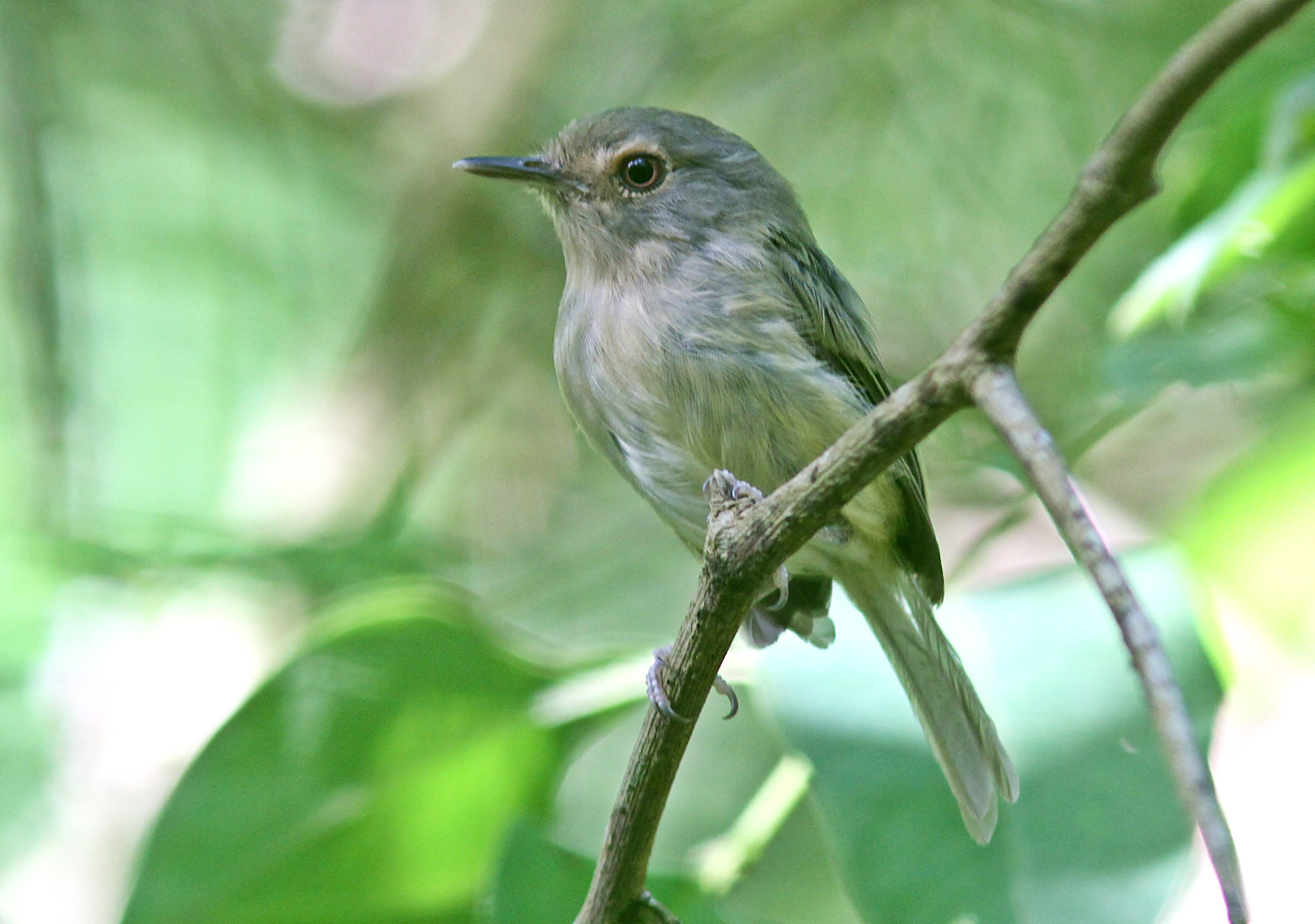
Buff-breasted tody-tyrant. Image credits: Anotonio Pessoa, Creative Commons
Large scale ranching and agriculture represent potential threats to nearly all remaining forest fragments. Such activities will increase the pressure on timber trees and hunted species, such as large frugivorous birds, primates, and large rodents that have been almost completely extirpated in this ecoregion. The priority conservation actions for the next decades are to: 1) establish protected areas to cover important habitat remnants, especially Private Reserves of National Heritage (RPPN); 2) reforest critical areas to form corridors connecting existing forest patches; and 3) promote environmental education targeting local communities to reduce habitat destruction and overexploitation of resources.
Citations
1. da Silva, J M C., R. Lemos Sa. 2018. Northern South America: Northeastern coastal and interior Brazil. https://www.worldwildlife.org/ecoregions/nt0152. 15 August 2018.
2. SOS MATA ATLÂNTICA. 1993. Mapa de remanescentes da floresta Atlântica nordestina. In Sociedade Nordestina de Ecologia , Conservation International e Fundação Biodiversitas (editors), Workhop Prioridades para a Conservação da Floresta Atlântica do Nordeste, Recife. http// www.bdt.org
3. Stattersfield, A.J., M.J. Crosby, A.J. Long, and D.C. Wege. (1998). A global directory of Endemic Bird Areas. BirdLife Conservation Series. BirdLife International, Cambridge, U.K.
